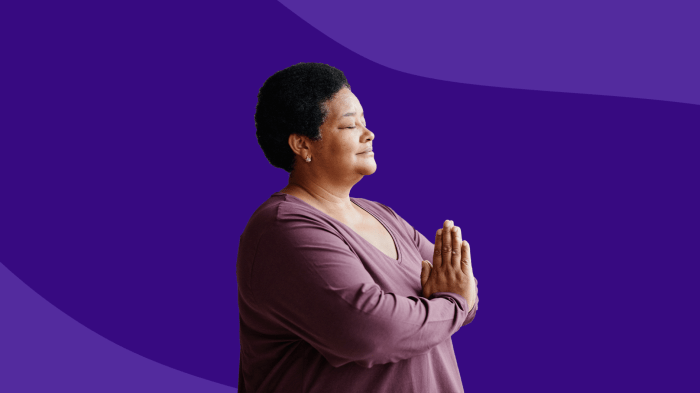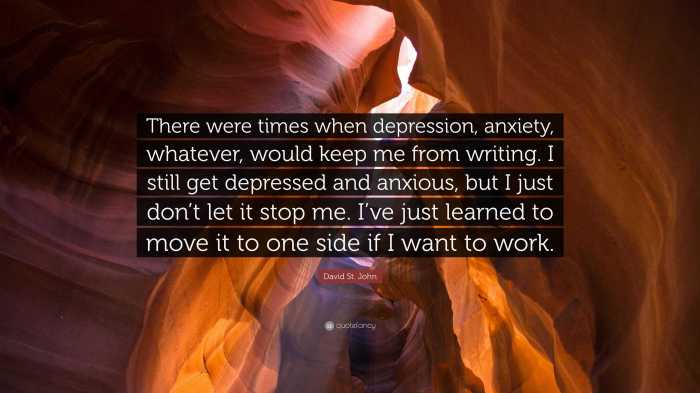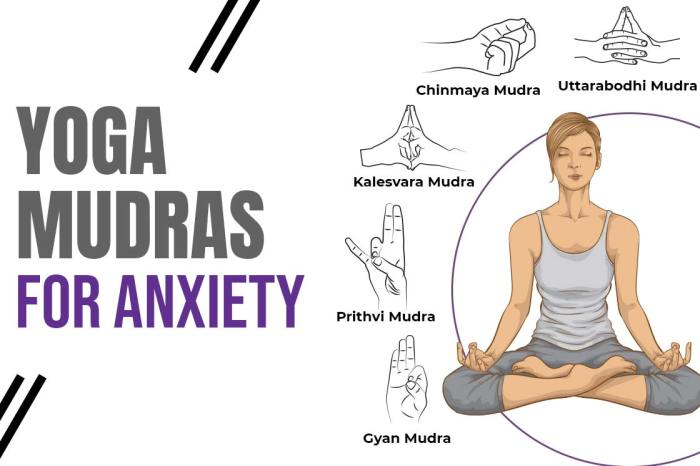Meditation for anxiety and depression sets the stage for this enthralling narrative, offering readers a glimpse into a story that is rich in detail with a focus on mental well-being.
Explore the transformative power of meditation as we delve into techniques, practices, and routines that can aid in managing anxiety and depression effectively.
Benefits of Meditation for Anxiety and Depression

Source: singlecare.com
Meditation has been shown to be a powerful tool in managing symptoms of anxiety and depression. It can help individuals develop mindfulness, improve focus, and regulate emotions, leading to a reduction in stress and negative thought patterns.
Physiological Changes during Meditation
During meditation, the body experiences various physiological changes that contribute to alleviating anxiety and depression. One of the key changes is a decrease in the production of stress hormones such as cortisol, which helps in calming the mind and reducing feelings of anxiety. Additionally, meditation can lower blood pressure, improve heart rate variability, and boost the immune system, all of which have a positive impact on mental health.
Long-Term Effects of Regular Meditation
Engaging in regular meditation practice can have lasting effects on mental health. Over time, individuals may experience reduced symptoms of anxiety and depression, increased feelings of relaxation and well-being, and improved resilience to stress. Regular meditation can also enhance self-awareness, self-compassion, and overall emotional regulation, making it a valuable tool in maintaining mental wellness in the long run.
Different Types of Meditation Techniques

Source: quotefancy.com
When it comes to managing anxiety and depression, various meditation techniques can be beneficial in promoting mental well-being. Each technique offers unique approaches to help individuals find inner peace and reduce stress.
Mindfulness Meditation
Mindfulness meditation involves focusing on the present moment without judgment, allowing thoughts and feelings to come and go without attachment. This practice can help individuals develop a greater sense of self-awareness and acceptance, which can be particularly helpful in managing anxiety and depression.
Loving-Kindness Meditation
Loving-kindness meditation, also known as Metta meditation, focuses on cultivating feelings of love, compassion, and kindness towards oneself and others. This practice can promote feelings of connection and empathy, which may help reduce symptoms of anxiety and depression by fostering a positive mindset.
Breathwork and Visualization Techniques
Integrating breathwork and visualization techniques into a meditation practice can further enhance the mental health benefits for anxiety and depression.
- Breathwork: Techniques such as deep breathing exercises can help calm the mind and reduce stress levels. By focusing on the breath, individuals can anchor themselves in the present moment and alleviate symptoms of anxiety and depression.
- Visualization: Visualization techniques involve creating mental images of peaceful and calming scenes, such as a serene beach or a lush forest. This practice can help individuals relax, reduce negative thought patterns, and cultivate a sense of inner peace, making it an effective tool for managing anxiety and depression.
Mindfulness Practices for Anxiety and Depression

Source: bannerpeakhealth.com
Mindfulness practices can be highly effective in helping individuals manage anxiety and depression by increasing awareness of their thoughts and emotions. By practicing mindfulness meditation, individuals can learn to observe their inner experiences without judgment, which can lead to a better understanding of the root causes of their anxiety and depression.
Increasing Awareness of Thoughts and Emotions
- One mindfulness exercise involves focusing on the breath and observing any thoughts or emotions that arise without getting attached to them. This practice can help individuals recognize patterns in their thinking that contribute to anxiety and depression.
- Body scan meditation is another technique where individuals focus on different parts of their body, noticing any sensations or tension. This exercise can help individuals become more attuned to their physical and emotional state, leading to a greater awareness of how anxiety and depression manifest in the body.
Significance of “Being Present”
- “Being present” refers to the practice of fully engaging with the current moment without dwelling on the past or worrying about the future. In the context of managing anxiety and depression, being present can help individuals break free from rumination and catastrophic thinking, which are common symptoms of these conditions.
- By cultivating mindfulness and focusing on the present moment, individuals can reduce the grip of anxiety and depression on their lives. This shift in perspective allows them to respond to challenges with more clarity and resilience, rather than being overwhelmed by negative thoughts and emotions.
Creating a Meditation Routine for Mental Health

Source: fitsri.com
Establishing a consistent meditation routine can greatly benefit individuals struggling with anxiety and depression by providing a sense of stability and calmness in their daily lives. By incorporating various meditation techniques into a structured schedule, one can effectively manage their symptoms and improve their mental well-being.
Weekly Meditation Schedule
It is essential to organize a weekly meditation schedule that includes different techniques to address the varying symptoms of anxiety and depression. Here is an example of a structured routine:
- Monday: Mindfulness Meditation
- Tuesday: Loving-Kindness Meditation
- Wednesday: Body Scan Meditation
- Thursday: Guided Visualization
- Friday: Mantra Meditation
- Weekend: Self-Compassion Meditation
Creating a Calming Meditation Space
In order to enhance the effectiveness of the meditation practice, it is important to set up a calming meditation space at home. Here are some tips on how to create an ideal environment for meditation:
- Choose a quiet and clutter-free area in your home.
- Add elements that promote relaxation such as cushions, candles, or essential oils.
- Set up a comfortable sitting position with good posture.
- Use soft lighting or natural light to create a peaceful ambiance.
- Play soothing music or nature sounds to enhance the calming atmosphere.
Closing Summary

Source: hopequre.com
Embark on a journey towards mental clarity and emotional balance with the insights gained from this exploration of meditation for anxiety and depression. Discover the tools to cultivate inner peace and resilience in the face of life’s challenges.